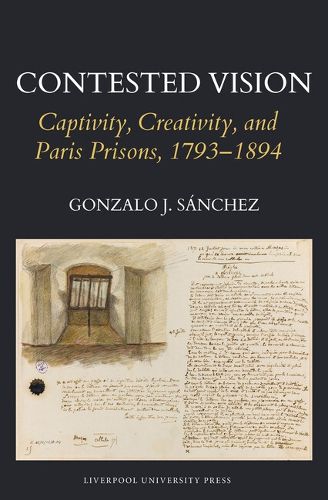Readings Newsletter
Become a Readings Member to make your shopping experience even easier.
Sign in or sign up for free!
You’re not far away from qualifying for FREE standard shipping within Australia
You’ve qualified for FREE standard shipping within Australia
The cart is loading…






Ebook available to libraries exclusively as part of the JSTOR Path to Open intiative.
How to creatively portray the nineteenth-century prison? Presenting original research findings and proposing novel connections between penal and visual history, this book investigates how artists and other inmates attempted to communicate their captivity by pictorial means. The prisons of Paris were characterized by distinctive scopic regimes from 1793 until 1894, especially the ascendant cellular jail, in which visibility was a central element of punitive practices. As authorities imposed increasing invisibility on detainees, artists such as Hubert Robert, Jacques-Louis David, Honore Daumier, Gustave Courbet, Armand Desire Gautier, Maximilien Luce, and Theophile Steinlen, among others, spent time behind bars grappling with representational strategies that almost always required conjoining words and images. The artists' prison was an ekphrastic site par excellence, a topography whose space could be depicted only when its words-graffiti, inscriptions, regulations-were bestowed legibility as signs. Penitentiary bureaucrats and criminologists analogously seized on the words and images through which inmates contested their invisibility to develop theories on recidivism, graffiti, and the "aesthetics of criminality," an ersatz study of inmate representations. The visual output scrutinized here is not mere illustration; these creations help fuse an integrated narrative showing how prison, art, and politics shaped each other.
$9.00 standard shipping within Australia
FREE standard shipping within Australia for orders over $100.00
Express & International shipping calculated at checkout
Ebook available to libraries exclusively as part of the JSTOR Path to Open intiative.
How to creatively portray the nineteenth-century prison? Presenting original research findings and proposing novel connections between penal and visual history, this book investigates how artists and other inmates attempted to communicate their captivity by pictorial means. The prisons of Paris were characterized by distinctive scopic regimes from 1793 until 1894, especially the ascendant cellular jail, in which visibility was a central element of punitive practices. As authorities imposed increasing invisibility on detainees, artists such as Hubert Robert, Jacques-Louis David, Honore Daumier, Gustave Courbet, Armand Desire Gautier, Maximilien Luce, and Theophile Steinlen, among others, spent time behind bars grappling with representational strategies that almost always required conjoining words and images. The artists' prison was an ekphrastic site par excellence, a topography whose space could be depicted only when its words-graffiti, inscriptions, regulations-were bestowed legibility as signs. Penitentiary bureaucrats and criminologists analogously seized on the words and images through which inmates contested their invisibility to develop theories on recidivism, graffiti, and the "aesthetics of criminality," an ersatz study of inmate representations. The visual output scrutinized here is not mere illustration; these creations help fuse an integrated narrative showing how prison, art, and politics shaped each other.